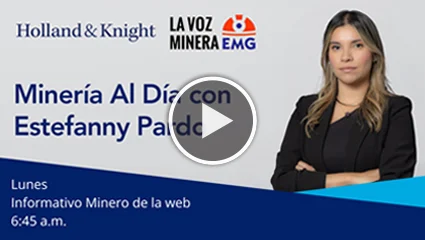DOE, EPA Announce $1 Billion in Awards for Methane Emissions Reduction Programs
Highlights
- The U.S. Department of Energy (DOE) and U.S. Environmental Protection Agency (EPA) announced their intent to provide financial assistance awards totaling $1 billion for the development of methods and/or systems to reduce methane emissions in the oil and natural gas sector.
- The awards are focused on three areas of interest: reducing emissions for existing wells and infrastructure, accelerating deployment of innovative solutions and providing accurate quantification of methane emissions across large geographic regions.
- It is anticipated that the funding opportunity will be announced in late February or March 2024, with the subsequent application process open for 60 days.
The U.S. Department of Energy (DOE) and U.S. Environmental Protection Agency (EPA) signaled in mid-February 2024 that they plan to release a Funding Opportunity Announcement (FOA) to issue $1 billion through financial assistance awards under three technical areas of interest (AOI) focused on the reduction of methane emissions in the oil and natural gas sector. It is expected that the FOA will be released in late February or March 2024 and that the application process will be open for 60 days. In anticipation of the FOA release, applicants can take several steps now to prepare for the process and are encouraged to contact Holland & Knight for assistance.
This will be a competitive process, and the intent is to reduce methane emissions from the oil and natural gas supply chain, including from upstream production to processing, transportation, storage and downstream end use. At this time, there is no further information on distribution of the $1 billion between the three technical AOIs, the objectives of which follow below.
AOI 1: Methane Emission Reductions for Existing Wells and Infrastructure
This anticipated AOI would be designed to mitigate methane emissions and reduce and prevent pollution and other environmental impacts associated with operating marginal conventional wells (MCWs) and other oil and natural gas assets. There will be three subtopics, under each of which funds would be provided directly to a single lead entity such as an organization that represents oil and natural gas producers, a nongovernmental research institution, university or tribal organization. The three subtopics anticipated for AOI 1 are expected to address:
- reduction of methane emissions from MCWs through the identification of wells requiring emissions mitigation beyond what is covered in Funding Opportunity DE-FOA-0003109 (relating to funding opportunities for states for mitigation of methane emissions from MCWs) and the procurement and installation of retrofit technologies to reduce the release of these emissions to the atmosphere
- reduction of methane emissions from other wells and upstream and midstream oil and natural gas assets, which are owned and/or operated by small operators, through the procurement and installation of retrofit technologies to reduce the release of emissions to the atmosphere
- reduction of methane emissions from oil and natural gas assets located on tribal lands through identification of wells and associated transport infrastructure requiring installation of retrofit technologies to reduce the release of emissions to the atmosphere from such wells and associated infrastructure
AOI 2: Accelerating Deployment of Innovative Methane Reduction Solutions
This anticipated AOI may encompass several subtopics that will seek to leverage prior technology investments and advancements in this area to reduce costs and accelerate commercialization of technologies for reducing emissions from gas-fueled compressors and engines, flare stacks and other methane-emitting equipment and processes associated with petroleum and natural gas systems. It is anticipated that one set of subtopic areas would focus efforts toward the rapid deployment of innovative solutions to complex and difficult-to-mitigate emissions sources (e.g., compressor station blowdowns, engine slip or nonroutine flaring).
It is envisioned that awards under AOI 2 would support the field demonstration and commercialization of solutions that can effectively address emissions from these harder-to-mitigate sources on a large scale and that also have the potential to help producers cost-effectively comply with ongoing regulatory efforts. It is anticipated that project teams under this AOI would include businesses that intend to commercialize the technologies and industry partners who would adopt those technologies, where applicable.
AOI 3: Regional Methane Emissions Reduction Consortium
This AOI would support the collection of empirical data to accurately characterize and quantify total methane emissions from oil and natural gas operations across multiple large geographical regions, including key oil- and natural gas-producing basins and associated transport infrastructure over various time frames. This characterization would be accomplished through measurement-informed methane emissions data integration and analysis, including, but not limited to, annual emissions estimates at equipment, facility and basin levels.
It is anticipated that one award would be selected from each region to allow a single project team to lead the characterization and quantification of methane emissions related to oil and natural gas operations and guide deployment of emissions-reduction technology across the entire region. Potential applicants are encouraged to collaborate with relevant organizations and interested parties to begin forming strong teaming arrangements that include a broad range of the relevant parties for their region.
For more information about this funding opportunity or assistance with the preapplication process, please contact the authors.
Information contained in this alert is for the general education and knowledge of our readers. It is not designed to be, and should not be used as, the sole source of information when analyzing and resolving a legal problem, and it should not be substituted for legal advice, which relies on a specific factual analysis. Moreover, the laws of each jurisdiction are different and are constantly changing. This information is not intended to create, and receipt of it does not constitute, an attorney-client relationship. If you have specific questions regarding a particular fact situation, we urge you to consult the authors of this publication, your Holland & Knight representative or other competent legal counsel.

